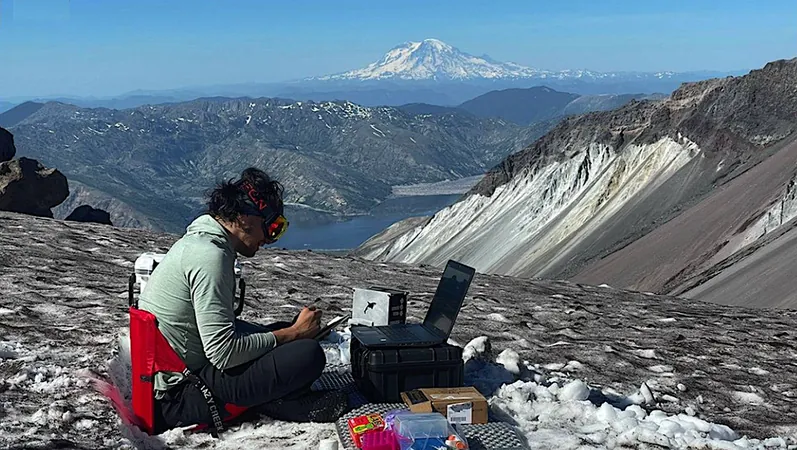
Groundbreaking Video Microscopy Unveils Secrets of Microbial Life in Extreme Aquatic Environments
2025-04-05
Author: Wei
In a groundbreaking study, scientists have harnessed the power of free video microscopy to explore microbial life in some of the planet's most extreme aquatic environments, providing critical insights into microbial motility, morphology, and optical properties as indicators of life.
The research encompassed a diverse array of field sites, enabling the sampling of seawater, sea ice brines, cryopeg brines, hypersaline pools, hyperalkaline springs, and glaciovolcanic cave ice. Remarkably, active microbial motion was recorded across all samples—except for those taken from cryopeg brine—without any prior sample treatment. In the case of the cryopeg brines, active motion was observed when samples underwent a temperature gradient above their natural conditions, suggesting that environmental factors significantly influence microbial behavior.
Images captured during the study revealed fascinating details: A non-motile diatom from Greenland's sea ice brine showcased distinct cell walls and organelles, while rapidly swimming organisms demonstrated intricate movement patterns. Specific setups, like those in the permafrost tunnels of Utqiaġvik, Alaska, and the glacier caves of Mt. St. Helens, allowed researchers to acquire valuable data at ambient air temperatures, demonstrating the adaptability of video microscopy across a range of harsh environments.
Notably, the research found that motility levels were generally low in field samples collected at temperatures below 4°C. In contrast, stimulating factors such as warming or the addition of L-serine caused dramatic increases in the fraction of motile cells, highlighting the capacity for microbes to adapt to their surroundings. Evidence of chemotaxis—where organisms move toward or away from chemical stimuli—and thermotaxis—movement in response to temperature gradient—was also documented in select samples.
An open-source, autonomous software was developed to classify the data, running on computational resources that can even be adapted for use in space missions, further emphasizing the potential of this technology for astrobiological applications.
The implications of these findings are profound, not only for understanding life in extreme conditions on Earth but also for the potential search for life beyond our planet. By demonstrating the effectiveness of volumetric light microscopy for detecting life, the study advocates for the development of methods to stimulate cells in situ, processing data under strict mission bandwidth limitations, and crafting instruments capable of capturing biological entities for in-depth chemical analysis.
The results are a testament to the resilience of life in extreme environments, underscoring the ongoing quest in astrobiology to find analogs that may exist elsewhere in the universe. As researchers continue to explore these uncharted realms, the prospects for discovering new forms of life—whether on Earth or beyond—remain incredibly exciting.
 Brasil (PT)
Brasil (PT)
 Canada (EN)
Canada (EN)
 Chile (ES)
Chile (ES)
 Česko (CS)
Česko (CS)
 대한민국 (KO)
대한민국 (KO)
 España (ES)
España (ES)
 France (FR)
France (FR)
 Hong Kong (EN)
Hong Kong (EN)
 Italia (IT)
Italia (IT)
 日本 (JA)
日本 (JA)
 Magyarország (HU)
Magyarország (HU)
 Norge (NO)
Norge (NO)
 Polska (PL)
Polska (PL)
 Schweiz (DE)
Schweiz (DE)
 Singapore (EN)
Singapore (EN)
 Sverige (SV)
Sverige (SV)
 Suomi (FI)
Suomi (FI)
 Türkiye (TR)
Türkiye (TR)
 الإمارات العربية المتحدة (AR)
الإمارات العربية المتحدة (AR)